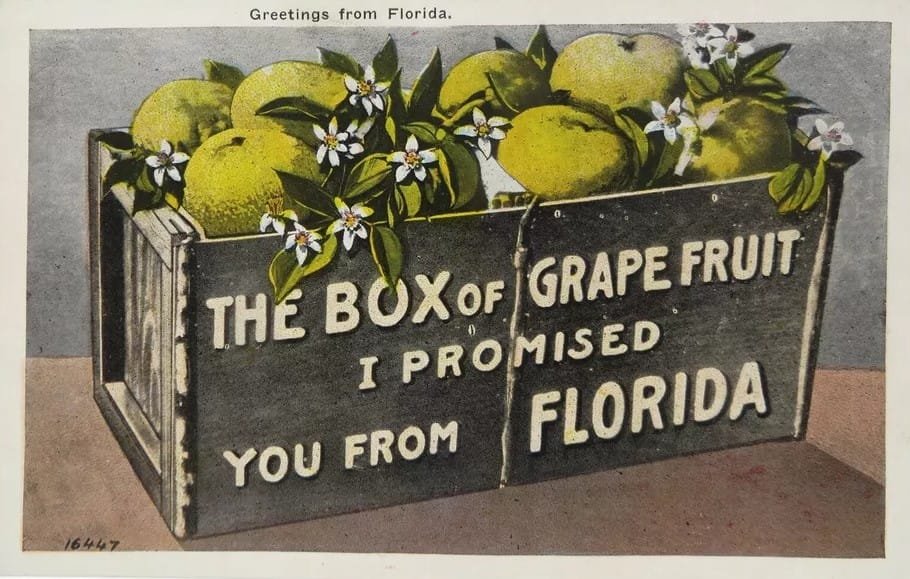Discover how a lucky mutation in Florida birthed the iconic pink grapefruit, transforming it into a symbol of health, luxury, and Sunshine State ingenuity.
How a “Million Dollar Mistake” Revolutionized Florida Citrus

In the sun-drenched groves of Florida, where orange and grapefruit trees dominate the landscape, a curious mutation forever changed the citrus world. Pink grapefruit, that sweet and tart breakfast staple, was not a planned agricultural marvel. It was, in fact, a happy accident—a “million-dollar mistake” that launched Florida into global citrus fame.
Grapefruit’s Journey: From Barbados to Florida’s Citrus Fields
Before pink grapefruit found its fame, the fruit’s origins can be traced back to the West Indies. Introduced to Barbados in 1696 by Captain Shaddock, the grapefruit evolved as a hybrid of pomelo and sweet orange. Over the centuries, it made its way through Jamaica and Cuba before finally arriving in Florida in 1846, courtesy of Count Odet Philippe.
Philippe planted the first grapefruit trees in Safety Harbor, Pinellas County, kickstarting a citrus boom. By the late 19th century, grapefruit—primarily the yellow variety—was well-established in the Sunshine State. But the story takes a surprising turn in the early 20th century.
A Curious Mutation: The Birth of Pink Grapefruit

In 1913, at the Kimball C. Atwood Grove in Manavista, Florida, a grove supervisor named R.B. Foster noticed something unusual at his grove located south of Tampa. On a Walters Seedless grapefruit tree, one branch bore fruit with a pinkish-red hue instead of the typical yellow flesh.
This natural mutation—later dubbed “Foster Pink Seedless Grapefruit”—didn’t just stand out for its color. It was sweeter and less acidic than its yellow counterpart, qualities that made it immediately desirable. The citrus industry embraced it as a breakthrough, and it wasn’t long before the pink grapefruit became a symbol of luxury and innovation.
Turning a Quirk of Nature into a Citrus Phenomenon
Understanding the potential of this unexpected discovery, Foster worked with Reasoner Brothers Royal Palm Nurseries to propagate the pink grapefruit. By grafting the pink-fleshed branch onto orange rootstock, they commercialized the fruit by 1914.
The introduction of Foster Pink Grapefruit revolutionized Florida’s citrus industry, paving the way for further varieties like the Ruby Red. Texas, another major citrus-growing state, adopted the budwood in the 1920s, sparking a nationwide demand for the colorful fruit.
Pink grapefruit became more than just a novelty. It became a mainstay in American diets, touted for its health benefits and unique flavor. By the mid-20th century, it was synonymous with sophistication, adorning breakfast tables and finding its way into cocktails, desserts, and even cosmetics.
The Mystery of the Groves in Manavista, Florida
In the early 1900s, Manavista, Florida, emerged as a notable hub in the state’s burgeoning citrus industry. Established by Kimball C. Atwood in 1892, the area was centered around his expansive 265-acre grapefruit grove, situated approximately a mile east of Palmetto on the north side of the Manatee River near the antebellum plantation of Gamble Mansion. This grove featured about 96 rows of grapefruit trees, including varieties such as Duncan, Royal, and Walters.
The severe winters of 1894 and 1895 devastated Florida’s citrus crops, but by 1897, Atwood had replanted his groves with new trees sourced from the Reasoner Brothers’ nursery. By 1915, the grove was producing 80,000 boxes of grapefruit annually, with a peak production of 160,000 boxes in 1927. The high-quality fruit gained international recognition, being served in the British royal household and regularly shipped to King George V
Florida’s Citrus Legacy and the Enduring Impact of Pink Grapefruit
While the original Atwood Grove in Manavista no longer exists, its contribution to Florida’s citrus legacy lives on. Grapefruit production remains a significant part of the state’s agricultural economy, with the pink variety continuing to represent Florida’s innovative spirit.
Visitors to Manatee County and surrounding areas can still celebrate this legacy. Nearby historical sites like Safety Harbor and the Florida Citrus Hall of Fame in Winter Haven offer a glimpse into the state’s rich citrus history. For those looking to experience the fruits of this happy accident firsthand, a road trip through Florida’s citrus belt offers plenty of opportunities to sample fresh, local grapefruit.
Find More Interesting Feature Stories
- Michigan’s Take on Coastal Delights: Crab Cakes with a Great Lakes Twist: Michigan chefs are redefining crab cakes with local twists, proving this Chesapeake Bay classic is more than a coastal delicacy.
- Cuban Oxtail Stew – This Fiery Cuban Dish Will Change How You See Oxtails Forever – Tradition Found in Sarasota: We take steps on a culinary journey with Rabo Encendido, a bold and soulful dish of Cuban Oxtail Stew that captures the essence of Cuban cuisine.
- Michigan News: News and events of Michigan’s Upper Thumb worth knowing.
Your Turn – Like This, or Hate it – We Want To Hear From You
Please offer an insightful and thoughtful comment. Idiotic, profane, or threatening comments are removed. Consider sharing this story. Follow us to have other feature stories fill up your Newsbreak feed from ThumbWind Publications.




